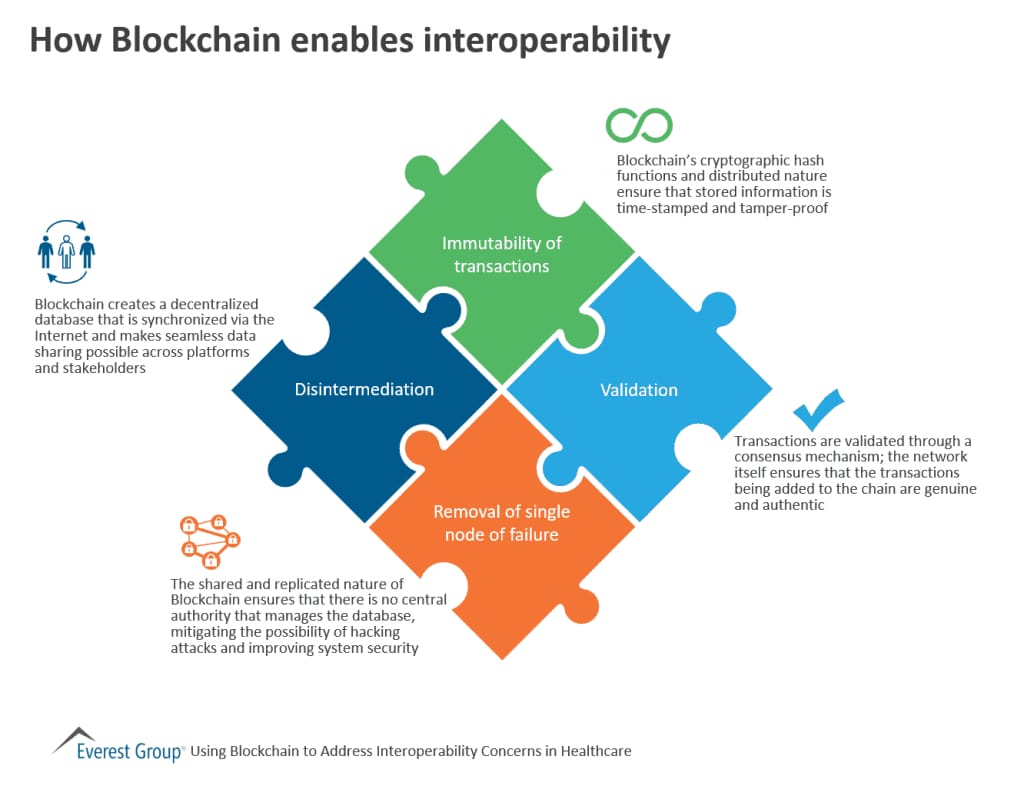Interoperability refers to the ability of different blockchain networks or other distributed ledger technologies (DLTs) to communicate, interact, and share information or value seamlessly with each other. It enables different blockchains to work together, exchange data, and collaborate in a decentralized manner, without requiring intermediaries or relying on a single blockchain network
Here is a general overview of the process:
1. Identify the participating blockchains:
The first step in achieving interoperability is to identify the blockchains that will participate in the interoperability process. This may involve selecting specific blockchains or distributed ledgers that need to communicate with each other or designing a solution that can work with a wide range of blockchains.
2. Define the interoperability protocol or mechanism:
The next step is to define the interoperability protocol or mechanism that will facilitate communication and interaction between the participating blockchains. This may involve selecting an existing interoperability protocol or designing a new one that meets the requirements of the specific use case or application.
3. Implement the interoperability solution:
Once the interoperability protocol or mechanism is defined, it needs to be implemented in the participating blockchains. This may involve integrating the interoperability solution into the blockchain networks, developing smart contracts or other mechanisms that facilitate cross-chain communication, or implementing interoperable APIs or data formats.
4. Establish consensus and governance:
Interoperability solutions may require establishing consensus mechanisms or governance models to ensure that different blockchains can agree on the state of shared data or assets. This may involve defining consensus rules, designing incentive mechanisms, or establishing governance structures that involve stakeholders from different blockchains.
5. Test and verify interoperability:
After the interoperability solution is implemented, it needs to be thoroughly tested and verified to ensure its functionality, security, and performance. This may involve conducting extensive testing, simulations, audits, and security assessments to identify and address any potential issues or vulnerabilities.
6. Monitor and maintain interoperability:
Once interoperability is established, it requires ongoing monitoring and maintenance to ensure its continued operation and security. This may involve monitoring the performance and security of the interoperability solution, implementing updates and patches as needed, and responding to any issues or incidents that may arise during the operation.
7. Use cases and applications:
Finally, interoperability can enable various use cases and applications that leverage the ability of different blockchains to communicate and interact with each other. This may include cross-chain transactions, cross-chain smart contracts, decentralized applications (dApps) that work across multiple blockchains, and other innovative use cases that take advantage of interoperability.

There are different approaches to achieving interoperability in the blockchain space, including:
1. Interchain protocols:
These are protocols or technologies that facilitate communication and interaction between different blockchains. Examples include Cosmos, Polkadot, and Aion, which provide interoperability solutions to connect various blockchain networks.
2. Cross-chain bridges:
These are specialized smart contracts or mechanisms that facilitate the transfer of assets or data between different blockchains. They usually involve locking assets on one blockchain while issuing corresponding assets on another blockchain, and vice versa. Examples include Wrapped Bitcoin (WBTC) and RenBTC, which are tokens that represent Bitcoin on other blockchains.
3. Standardization:
Standardizing data formats, protocols, and APIs across different blockchains can enable interoperability. For example, common standards like ERC-20 and ERC-721 for tokens on the Ethereum blockchain have allowed for the development of a wide range of interoperable decentralized applications (dApps) and services.
4. Sidechains:
These are separate blockchains that are connected to a main blockchain and can transfer assets or data between each other. Sidechains can enable interoperability by allowing assets to be locked on the main chain and issued on a sidechain, and vice versa. Examples include the Liquid Network sidechain for Bitcoin and the Plasma Network for Ethereum.
5. Interoperable wallets and exchanges:
Wallets and exchanges that support multiple blockchain networks can facilitate interoperability by allowing users to manage and transfer assets across different blockchains from a single interface.
